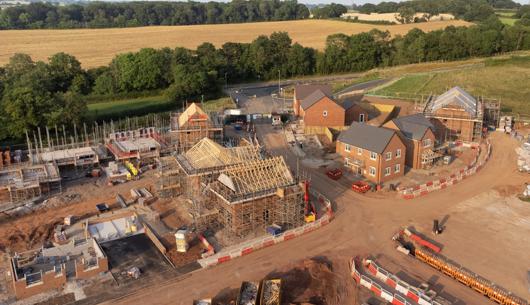Planning deliverable developments: viability assessment under NPPF 2018
As the transitional arrangements under the previous National Planning Policy Framework (‘NPPF’) come to an end on 24 January 2019 we re-visit how viability assessment has changed under NPPF 2018 and what this means for local planning authorities, developers and others.
This article is taken from January's public matters newsletter. Click here to view more articles from this issue.
As the transitional arrangements under the previous National Planning Policy Framework (‘NPPF’) come to an end on 24 January 2019 we re-visit how viability assessment has changed under NPPF 2018 and what this means for local planning authorities, developers and others.
What is viability?
The Planning Practice Guidance (‘PPG’) which accompanies NPPF 2018 defines viability assessment as “a process of assessing whether a site is financially viable, by looking at whether the value generated by a development is more than the cost of developing it. This includes looking at the key elements of gross development value, costs, land value, landowner premium, and developer return.”
Viability assessments were originally introduced to ensure that sites “should not be subject to such a scale of obligations and policy burdens that their ability to be developed viably is threatened” (para 173, NPPF 2012). However, critics of the viability process have argued that some developers rely upon financial viability assessments to justify diverging from national and local planning policies and to limit their contributions to infrastructure and affordable housing.
Claims that viability assessments are commercially sensitive, and the fact that this has discouraged planning authorities from making them publicly available has only increased criticism that the assessment process lacks transparency and openness.
Viability assessment at the plan making stage
NPPF 2018 strengthens the role of viability assessment at the plan making stage. It requires that:
“Strategic policy-making authorities should have a clear understanding of the land available in their area through the preparation of a strategic housing land availability assessment. From this, planning policies should identify a sufficient supply and mix of sites, taking into account their availability, suitability and likely economic viability.” (para 67 NPPF 2018)
The updated PPG that accompanies NPPF 2018 requires plan makers to clearly set out the contributions expected from development, including the levels and types of affordable housing provision required, as well as other infrastructure such as education, health, transport, digital, water and green infrastructure. The aim is to ensure that these obligations are sufficiently certain that they can be accounted for in the price of land. The PPG adds that the price paid for land is not a relevant justification for failing to accord with relevant policies in the plan.
However, viability assessment at the plan making stage ‘should not compromise sustainable development’ and local plan makers should consult the local community, developers and other stakeholders to ensure that obligations are realistic and will not undermine deliverability of the plan. Site promoters are required to engage with planning authorities at this plan making stage.
A standard approach to assessing viability
There is no longer a requirement to assess viability for each individual site or development. Plan makers may use site typologies to determine viability for sites with shared characteristics, such as location, size, land use type, etc. Strategic sites (those critical to delivering the strategic priorities of the plan) may still be the subject of a site-specific viability assessment.
While the previous PPG rejected a standard approach to viability assessment, NPPF 2018 seeks to standardise the inputs to viability assessment in relation to development value, costs, returns and premiums etc. Costs should be assessed at the plan making stage and be based on evidence which reflects local market conditions. A gross development return of 15 to 20 percent should be assumed, although there is scope for plan makers to apply alternative figures where this is justified by particular circumstances.
In terms of land value, the PPG makes it clear that a benchmark land value should be calculated based on the existing use value of the land, plus a premium for the landowner (EUV+). The premium should reflect the minimum price at which it is considered a rational landowner would be willing to sell their land. This reflects the approach taken by the High Court in the recent case of Parkhurst Road Ltd v Secretary of State for Communities and Local Government & Anor [2018] EWHC 991 (Admin) in which the Court rejected a developer’s claim that it could not meet its affordable housing obligations because of the high purchase price of the land to be developed.
Viability and decision making
Where up-to-date policies have set out the contributions expected from development, planning applications that comply with them should be assumed to be viable. It will then be for the applicant to demonstrate with appropriate evidence that particular circumstances justify the need for a viability assessment at the application stage.
While decision makers are required to have regard to viability assessments, the weight to be given to any particular viability assessment is a question of planning judgment to be exercised by the relevant planning authority. As with all planning decisions, the courts are unlikely to intervene where a planning authority exercises its discretion lawfully; i.e. rationally and with regard to all material considerations.
Transparency
The PPG makes clear that any viability assessment should be prepared on the basis that it will be made publicly available. Where a planning authority is satisfied that a viability report does contain information that is commercially sensitive they may not require the full report to be published, but an executive summary will need to be produced instead.
Conclusion
The new policies set out in NPPF 2018 will apply to all plans sent for examination after 25 January 2019. Local planning authorities will need to ensure that they have reviewed and considered the new provisions regarding viability assessments and undertaken the necessary consultation with developers, site promoters and other stakeholders.
When determining planning applications, local authorities will also need to be mindful of the approach to calculating land value in the NPPF 2018 and ensure that developers do not avoid making policy compliant planning contributions by virtue of a high base land value (whether actually paid or not). Accepting an unreasonably high land value in a viability assessment as justification for a development not according with relevant policies could leave a local authority facing judicial review challenges from disgruntled third parties; something which we have seen recently.
Conversely, developers are likely to find it more difficult to justify divergence from planning requirements and expected contributions under s 106 of the Town and Country Act 1990 by reference to viability constraints. They will therefore need to take full account of up-to-date planning policies and expected contributions when acquiring land and when preparing planning applications. Developers pursuing an application supported by a viability statement should also be mindful of the presumption that this will be made available to the public and to any commercial sensitivities arising from this.
Contact

Mark Hickson
Head of Business Development
onlineteaminbox@brownejacobson.com
+44 (0)370 270 6000








































